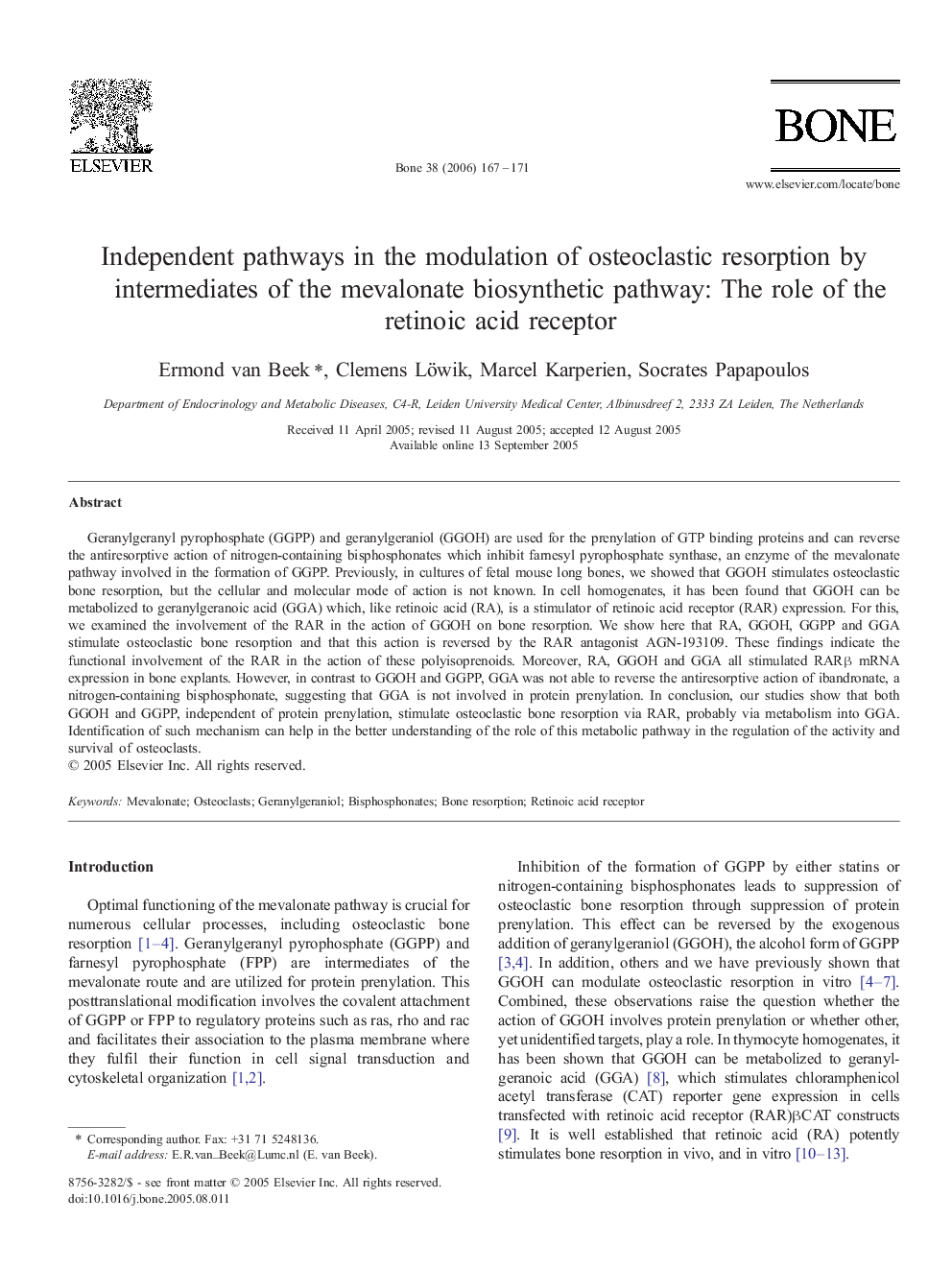| Article ID | Journal | Published Year | Pages | File Type |
|---|---|---|---|---|
| 2783161 | Bone | 2006 | 5 Pages |
Geranylgeranyl pyrophosphate (GGPP) and geranylgeraniol (GGOH) are used for the prenylation of GTP binding proteins and can reverse the antiresorptive action of nitrogen-containing bisphosphonates which inhibit farnesyl pyrophosphate synthase, an enzyme of the mevalonate pathway involved in the formation of GGPP. Previously, in cultures of fetal mouse long bones, we showed that GGOH stimulates osteoclastic bone resorption, but the cellular and molecular mode of action is not known. In cell homogenates, it has been found that GGOH can be metabolized to geranylgeranoic acid (GGA) which, like retinoic acid (RA), is a stimulator of retinoic acid receptor (RAR) expression. For this, we examined the involvement of the RAR in the action of GGOH on bone resorption. We show here that RA, GGOH, GGPP and GGA stimulate osteoclastic bone resorption and that this action is reversed by the RAR antagonist AGN-193109. These findings indicate the functional involvement of the RAR in the action of these polyisoprenoids. Moreover, RA, GGOH and GGA all stimulated RARβ mRNA expression in bone explants. However, in contrast to GGOH and GGPP, GGA was not able to reverse the antiresorptive action of ibandronate, a nitrogen-containing bisphosphonate, suggesting that GGA is not involved in protein prenylation. In conclusion, our studies show that both GGOH and GGPP, independent of protein prenylation, stimulate osteoclastic bone resorption via RAR, probably via metabolism into GGA. Identification of such mechanism can help in the better understanding of the role of this metabolic pathway in the regulation of the activity and survival of osteoclasts.
